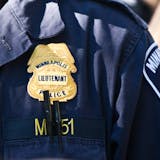On Aug. 18, 1968, in the dusty, high plains town of Alamosa, Colo., about 120 runners toed the line of the first Olympic Marathon Trials. The race was designed to identify those who would perform well in Mexico City's thin air in October, but the science of running at altitude — training, diet, hydration, clothing — was in its infancy.
There were six Minnesotans in the race, among them 31-year-old Ron Daws, a pioneer of the Twin Cities running community and widely acknowledged to be the country's best "no-talent" runner; Tom Heinonen, 23, who'd qualified for an expenses-paid, monthlong training camp in Alamosa; and Jeff Reneau, a University of Minnesota graduate student who'd joined the Army in 1966.
This was an open race — anyone who could get to Alamosa could run. Some had never competed in a marathon. They went out too fast, or too slow. Cotton shorts with thick seams chafed. Some tried a new green drink, Gatorade, with varied results. Yale undergraduate Frank Shorter, who was among the marathon's rising stars, borrowed a pair of shoes the night before the race. He dropped out with hideously blistered feet. (Still, he went on to win gold in 1972 in Munich.) Almost all suffered dehydration, some losing more than 10 pounds over the 26.2 miles. Only 63 of the starters finished.
While many of the favorites faded or limped off the course, Daws, who'd gone to Alamosa six weeks before to acclimate, ran the race of his life: He took the third and the last spot on the Olympic team. Reneau finished 10th, and Heinonen 14th, and the Twin Cities Track Club — Daws, Heinonen and Jerry Smith — won the team title.
The race was emblematic of the Wild West that was distance running, and galvanizing for Minnesota runners — with meticulous preparation, a guy they knew and ran with could achieve Olympic stature.
"The runner runs because he knows he must run. He understands this instinctively. This craving to run put me in pursuit of the Mexican Olympics," Daws would later write in his memoir, "The Self-Made Olympian."
Daws died at age 55 in 1992, but on the 50th anniversary of that Olympic trials race, Heinonen and Reneau shared their memories of Alamosa, the running scene in 1968, Daws' idiosyncrasies and his legacy in the Twin Cities.
Heinonen: "I didn't have a plan"
Heinonen, who grew up in the Twin Cities and ran for the University of Minnesota, lives today in Eugene, Ore. He is retired from 28 years of coaching University of Oregon women's track and cross-country teams. Here are his recollections, edited for space:



